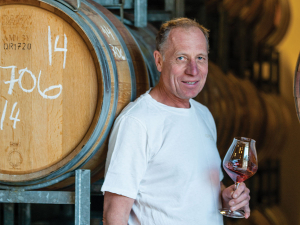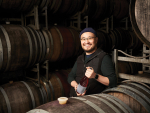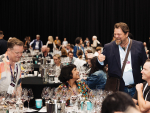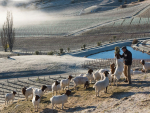In the late 1970s, Ann Pinckney defied the prevailing view that Central Otago's climate was too extreme for viticulture, establishing its first commercial vines since Jean Désiré Féraud’s first efforts more than a century later.
Today, the region's vineyards are planted with approximately 80% Pinot Noir, one-third of the country's total, reflecting the variety's suitability for the region's growing conditions and the burst of plantings in the early 2000s. Central's present-day limelight belies the hard scrabble of its establishment, and the sheer commitment and time required to grow great Pinot in this beautiful, challenging region. "It's four decades since I planted my first Pinot Noir at Gibbston Valley," recalls Alan Brady. "And it's 37 years since we produced the first commercial release of Pinot Noir in 1987. We were isolated from mainstream New Zealand winemaking, at the time mainly in the North Island, and knew only what we could read about how to grow the variety and handle the fruit. I devoured books on Burgundy; their passionate belief in the cult of terroir seemed to me almost mystical. As a concept it intrigued, and after four decades of watching and listening to Pinot Noir as it settled into the geological and climatic diversity of this foreign environment, I have to say I'm a believer." Indeed he is - at age 88, Alan is now building his third winery, for his Wild Irishman label.
The first Central Otago Pinot Noirs Rudi Bauer made were on Rippon on the shores of Lake Wānaka in 1988. He says New Zealand has the pioneers of Martinborough to thank for their role in shaping Pinot Noir: "Larry McKenna, Clive Paton, Neil McCallum... they made such shining wines and they were huge visionaries and drivers of progress for us all." Along with the late Richard Riddiford, they saw very early on the need for a premium quality mindset as well as vehicles for collaboration and learning, such as the Pinot Workship and the original Wellington Pinot event.
Rudi feels concerned that the industry seems increasingly fragmented and believes it needs a more unified voice, especially for marketing overseas. "Pinot is a variety that speaks to emotion, and we have a great story to tell with enormous potential, but we need a collective approach to do this."
Nick Mills' parents planted Rippon's first vines in 1982 on land that had been owned by the family for over a century. "It took time for the vines to find purchase on the land, but also for the family to do so," he says. "It's taken a long time for the detail of the wine to come through, for the transmission from site to seed, and then on to the person drinking it."
The trio shares a sense of humility and respect for the winegrowing process and, above all, the land. "On this journey, I believe it's Pinot Noir that's shown us where to go," Alan says. "And if we are wise, we'll go on listening to what she's telling us about our sites, our soils, the subtle nuances of energy and light. If we're wise, we won't let the marketplace or marketeers dictate style but continue to develop our empathy and understanding of our vineyards, so that we can be more responsive and responsible farmers."
"We are still so young, and we are on the same journey together," Rudi adds. "It is a privilege to be starting out, to be looking after the land. It's not about 'me', it's about bringing the paddock into the glass."














